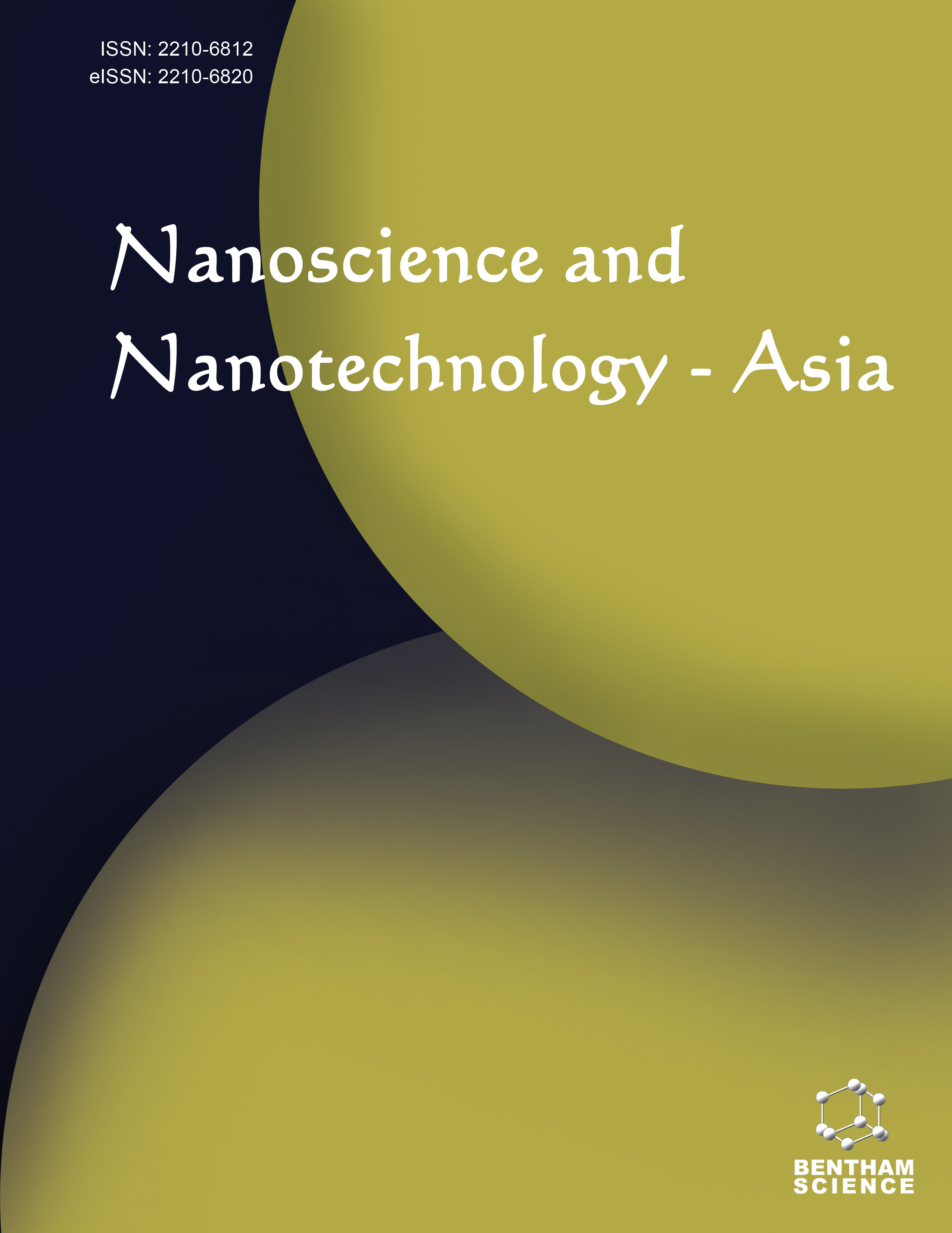- Home
- A-Z Publications
- Nanoscience & Nanotechnology-Asia
- Previous Issues
- Volume 4, Issue 1, 2014
Nanoscience & Nanotechnology-Asia - Volume 4, Issue 1, 2014
Volume 4, Issue 1, 2014
-
-
Editorial
More LessWe are very proud to bring you the first issue of Nanoscience and Nanotechnology-Asia for the year 2014 by Bentham Science Publishers. The journal aim is to provide a unique forum for scientific publications of high quality research on all the most recent advances in Nanoscience and nanotechnology with an emphasis on research in Asia and Japan. With time, no doubt we are publishing different interesting manuscript Read More
-
-
-
An Overview of Selected Catalytic Chemical Vapor Deposition Parameter for Aligned Carbon Nanotube Growth
More LessAligned carbon nanotube (A-CNT) has been extensively studied due to their high potential in many applications. Despite the fact that catalyst preparation is the key role to grow A-CNTs, the parameter of catalytic chemical vapor deposition (C-CVD) also influences A-CNT growth and its morphologies. This review focused to critically synthesize the published data in scientific report on A-CNT for better understanding the C Read More
-
-
-
Thixotropic and Injectable Nature of Supramolecular Aqueous Gels Derived from N,N'-Dibenzoyl-L-cystine and the Effects of Esterification
More LessAuthors: Eva-Maria Schon, Jurgen Bachl and David Díaz DíazThe thixotropic and injectable properties of physical aqueous gels derived from N,N'-dibenzoyl-L-cystine (1, DBC) and its dimethyl ester (2) at room temperature (RT) are described. The characterization of the materials was carried out by oscillatory rheological measurements, including thixotropy-loop tests, and field emission scanning electron microscopy (FE-SEM). Moreover, the effects of gelator concentration and add Read More
-
-
-
Solid Lipid Nanoparticles: An Innovative Nano-Vehicles for Drug Delivery
More LessAuthors: Hema Chaudhary, Samita, Nitika Puri and Vikash KumarNanotechnology is an emergent field with numerous applications in drug delivery, clinical medicine, nutriceuticals as well as in other fields also. In this techno, Solid lipid nanoparticles (SLN) is a part which consist solid colloidal particles ranging in size from 1 to 1000 nm and act as “magic bullet” when coupled with ligands/targeting ligands. SLN consisting of a solid-lipid promising advance delivery of lipophilic drugs and also used a Read More
-
-
-
Fluorescence of ZnTe Quantum Dots Prepared Through Chemical Route
More LessAuthors: Lalit Baruah, Debesh K. Avasthi and Siddhartha S. NathThe room-temperature fluorescence spectroscopy of zinc telluride quantum dots is investigated. ZnTe quantum dots are synthesized by a chemical route in ethylene glycol with different reactant concentrations and reaction temperatures. Prepared samples are characterized by X-ray diffractometry (XRD) and high resolution transmission electron microscopy. XRD investigation shows the cubic structured ZnTe nanoparti Read More
-
-
-
The Effect of Surfactants and Co-Reagents on the Microstructure, Morphology and Optical Properties of ZnO Nanoparticles Synthesized by Microwave Irradiation
More LessAuthors: Prakash Thangaraj, Jayaprakash Rajan and Giovanni NeriZinc oxide nanoparticles (ZnO NPs) have been synthesized through microwave irradiation by using different surfactants (Polyvinyl pyrrolidone (PVP), Polyethylene glycol (PEG) and Sodium dodecyl benzene sulphonate SDBS)) and co-reagents (NH3 and NaOH). The synthesized samples were analyzed by thermogravimetric and differential thermal analysis (TG-DTA), X-ray diffraction (XRD), Fourier-transform infrared spectrosco Read More
-
-
-
Microwave Synthesis and Electrophoretic Deposition of TiO2 on Steel Substrate for Natural Dye and CdS Quantum Dots Sensitized Photoelectrochemical Cells
More LessIn this investigation, a cost effective approach has been developed to fabricate photoelectrochemical (PEC) solar cell on cheap steel substrate sensitized with natural dye and performance has been compared with CdS quantum dots (QDs) sensitized PEC cell. The performance of natural dye sensitized PEC cells has been found to be better than QDs senstitized cell and comparable to conventional high cost ITO-FTO based solar Read More
-
-
-
Nano-Level Surface Processing of Fine Particles by Cavitation to Improve the Photocatalytic Properties of Titanium Oxide
More LessTitanium oxide is known as a photocatalytic material that promotes the generation of hydrogen and oxygen from water by sunlight irradiation. In the present study, titanium oxide particles were treated by water jet cavitation generated using an ejector nozzle. Sub-stream suction occurs in small-sized high-pressure ejector nozzles because of the dynamic high pressure. The water containing titanium oxide powder or a mixed Read More
-
Most Read This Month
Article
content/journals/nanoasi
Journal
10
5
false
en


